Everything you need to know about nutrition powder process line in 2024
Significance of Efficiency and Energy-Saving Technologies
In the realm of food machinery, particularly in the production of nutrition powder, the integration of efficiency and energy-saving technologies plays a pivotal role. These innovations not only streamline operations but also enhance sustainability and profitability for manufacturers.
Importance of Efficiency
Efficiency in a fully automatic nutrition powder process lineensures that every stage of production—from raw material handling to packaging—is optimized. This optimization minimizes wastage of resources such as ingredients and energy, thereby reducing overall production costs and improving output consistency.
Energy-Saving Technologies
The adoption of energy-saving technologies in modern food machinery is crucial for reducing environmental impact and operational costs. Advanced systems incorporate features like variable frequency drives (VFDs), which adjust energy usage based on production demands, and heat recovery systems that recycle energy from processes like drying.
Case Studies in Efficiency and Energy Savings
Real-world examples highlight the tangible benefits of efficiency and energy-saving technologies. For instance, companies implementing automated systems report significant reductions in energy consumption per unit of production. This not only lowers carbon footprints but also enhances competitiveness in the market by offering sustainable products.
In conclusion, integrating high-efficiency and energy-saving technologies in nutrition powder process lines is not just a trend but a necessity in today's industrial landscape. The next sections will delve into advanced technologies and practical solutions that define the forefront of automated food manufacturing.
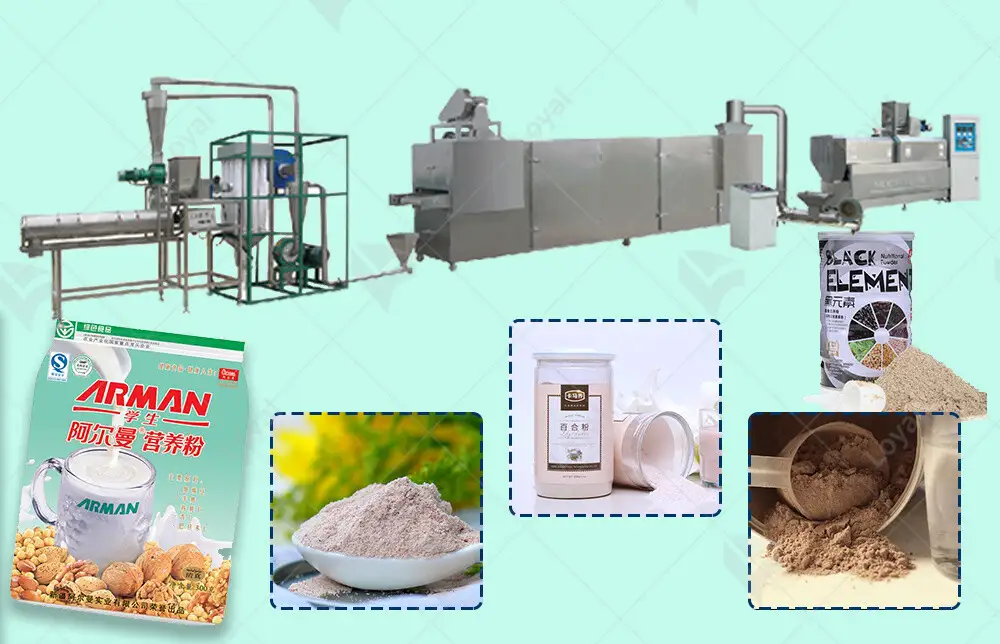
Advanced Technologies in Fully Automatic Nutrition Powder Process Line
In the dynamic landscape of food machinery, the evolution of fully automatic nutrition powder process lines has been marked by the integration of cutting-edge technologies. These advancements not only enhance productivity but also elevate quality standards across the industry.
1.Overview of State-of-the-Art Machinery and Equipment
Modern nutrition powder process lines are equipped with sophisticated machinery designed to handle various stages of production seamlessly. This includes automated systems for mixing, grinding, and blending ingredients with precision. Advanced sensors and actuators ensure optimal process control, maintaining consistency in product quality batch after batch.
2.Integration of IoT and AI in Automated Processes
The advent of Internet of Things (IoT) and Artificial Intelligence (AI) has revolutionized how nutrition powder process lines operate. IoT-enabled sensors gather real-time data on production metrics such as temperature, humidity, and ingredient levels. AI algorithms analyze this data to optimize operational parameters, predicting maintenance needs and minimizing downtime.
3.Role of Advanced Control Systems in Optimizing Production
Advanced control systems are integral to the efficient operation of fully automatic nutrition powder process lines, offering precise control and monitoring capabilities that enhance overall production efficiency and quality.
Centralized Monitoring and Control | In modern food machinery, Programmable Logic Controllers (PLCs) and Supervisory Control and Data Acquisition (SCADA) systems play a pivotal role. These systems enable centralized monitoring of various production parameters such as temperature, pressure, and flow rates. Operators can adjust settings remotely and receive real-time data insights to ensure optimal production conditions. |
Precision Regulation of Processes | PLCs execute complex sequences of operations with accuracy and reliability. They manage the flow of ingredients, control mixing and blending processes, and regulate packaging and labeling tasks. This precision reduces human error, minimizes production downtime, and enhances product consistency and quality. |
Integration with IoT for Enhanced Efficiency | The integration of Internet of Things (IoT) technologies further enhances the capabilities of advanced control systems. IoT sensors collect data from equipment and production environments, transmitting it to centralized systems for analysis. AI algorithms then interpret this data to predict maintenance needs, optimize energy consumption, and improve overall equipment effectiveness (OEE). |
Benefits of Real-Time Insights | Real-time data insights provided by advanced control systems empower decision-making processes. Operators can proactively identify and address potential issues before they escalate, ensuring continuous production flow and minimizing costly disruptions. This proactive approach not only increases operational efficiency but also enhances product traceability and regulatory compliance. |
By leveraging advanced control systems in fully automatic nutrition powder process lines, manufacturers can achieve higher productivity, lower operational costs, and superior product quality. The following section will explore specific energy efficiency solutions that further optimize these automated systems.
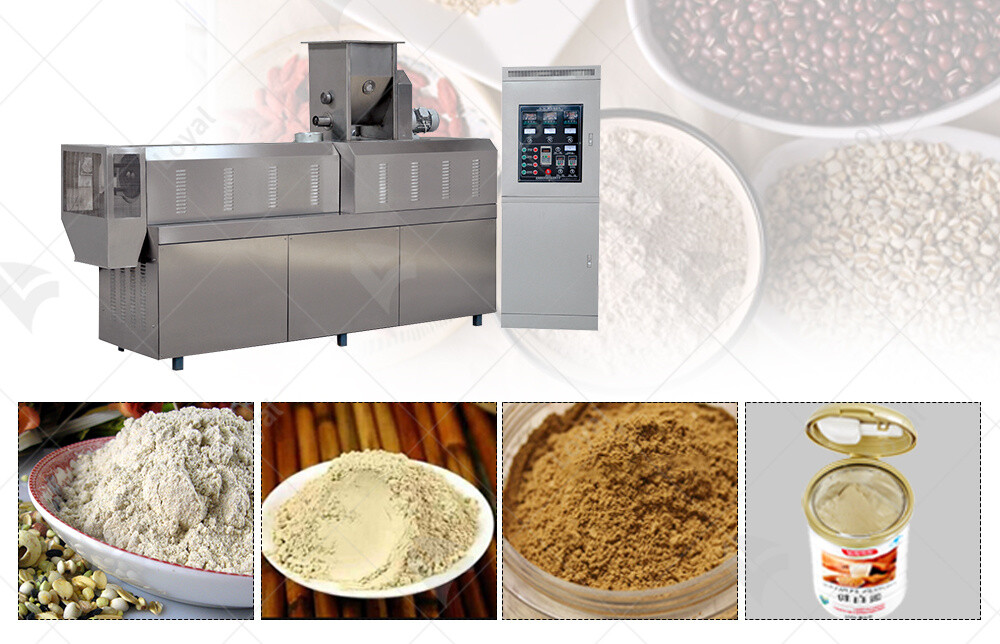
Enhancing Efficiency through Automation
Automation has revolutionized the food manufacturing industry, particularly in the production of nutrition powder. By streamlining processes and minimizing human intervention, automated systems not only improve efficiency but also enhance overall product quality and consistency.
Benefits of Fully Automated Production Lines
Fully automated nutrition powder process lines offer several key advantages:
1.Increased Productivity: Automated systems operate continuously without the need for breaks, resulting in higher production output compared to manual operations.
2.Consistent Quality: Automated processes ensure uniform mixing, blending, and packaging, reducing variability and ensuring each batch meets stringent quality standards.
3.Reduced Labor Costs: By minimizing the need for manual labor, automated lines lower labor costs while reallocating human resources to more strategic roles.
Utilization of Sustainable Energy Sources
In the realm of food machinery innovation, the integration of sustainable energy sources represents a pivotal advancement in enhancing efficiency and reducing environmental impact. The nutrition powder process line has evolved significantly, embracing technologies that harness renewable energy sources such as solar and wind power. These sources not only reduce operational costs but also align with global sustainability goals.
Solar Energy Integration
Solar panels are increasingly integrated into the design of nutrition powder process lines, providing a renewable source of electricity to power various stages of production. This integration not only reduces dependency on traditional energy grids but also minimizes the carbon footprint associated with manufacturing operations. Advances in photovoltaic technology have made solar energy an economically viable choice for powering continuous processes within the production line.
Wind Energy Application
Similarly, wind turbines are leveraged to generate clean energy for nutrition powder process lines operating in regions with ample wind resources. By harnessing wind power, manufacturers can achieve energy independence and contribute to reducing greenhouse gas emissions. The scalability of wind turbines allows for customization based on production needs, ensuring consistent and reliable power supply throughout the manufacturing process.
Energy Storage Solutions
Efficient energy storage solutions, such as lithium-ion batteries and advanced capacitors, complement the utilization of renewable energy sources in nutrition powder process lines. These storage systems mitigate the intermittency of renewable energy generation, enabling continuous operation even during periods of low energy production. By optimizing energy storage, manufacturers enhance overall system reliability and responsiveness to fluctuating energy demands.

Energy Efficiency Solutions
Utilization of Sustainable Energy Sources
In the realm of food machinery innovation, the integration of sustainable energy sources represents a pivotal advancement in enhancing efficiency and reducing environmental impact. The nutrition powder process line has evolved significantly, embracing technologies that harness renewable energy sources such as solar and wind power. These sources not only reduce operational costs but also align with global sustainability goals.
1.Solar Energy Integration
Solar panels are increasingly integrated into the design of nutrition powder process lines, providing a renewable source of electricity to power various stages of production. This integration not only reduces dependency on traditional energy grids but also minimizes the carbon footprint associated with manufacturing operations. Advances in photovoltaic technology have made solar energy an economically viable choice for powering continuous processes within the production line.
2.Wind Energy Application
Similarly, wind turbines are leveraged to generate clean energy for nutrition powder process lines operating in regions with ample wind resources. By harnessing wind power, manufacturers can achieve energy independence and contribute to reducing greenhouse gas emissions. The scalability of wind turbines allows for customization based on production needs, ensuring consistent and reliable power supply throughout the manufacturing process.
3.Energy Storage Solutions
Efficient energy storage solutions, such as lithium-ion batteries and advanced capacitors, complement the utilization of renewable energy sources in nutrition powder process lines. These storage systems mitigate the intermittency of renewable energy generation, enabling continuous operation even during periods of low energy production. By optimizing energy storage, manufacturers enhance overall system reliability and responsiveness to fluctuating energy demands.
Energy-Saving Technologies and Practices
Energy efficiency is paramount in the design and operation of modern nutrition powder process lines. Manufacturers continuously innovate to implement energy-saving technologies and adopt practices that minimize energy consumption while maximizing production output and reliability.
High-Efficiency Motors and Drives | One of the key energy-saving technologies integrated into nutrition powder process lines is the use of high-efficiency motors and drives. These components are designed to minimize energy loss through improved efficiency ratings and variable speed capabilities. By adjusting motor speeds according to production demands, energy consumption is optimized, resulting in substantial energy savings over time. |
Heat Recovery Systems | Heat recovery systems play a crucial role in capturing and reusing thermal energy generated during various stages of the production process. In nutrition powder process lines, heat exchangers are strategically installed to recover waste heat from equipment such as dryers and ovens. This recovered heat is then utilized to preheat incoming air or water, reducing the energy required for heating and enhancing overall process efficiency. |
LED Lighting and Automation Controls | The adoption of LED lighting and advanced automation controls further contributes to energy savings in nutrition powder process lines. LED lighting systems consume significantly less electricity compared to traditional lighting options, thereby reducing overall facility energy consumption. Automation controls optimize lighting schedules and equipment operation, ensuring energy use is aligned with production needs while minimizing unnecessary energy expenditures. |
Energy-efficient Packaging and Logistics | Beyond production processes, energy efficiency extends to packaging and logistics within nutrition powder manufacturing. Manufacturers are increasingly utilizing lightweight and recyclable packaging materials to reduce transportation-related energy costs. Additionally, optimizing logistics through route planning and efficient distribution centers minimizes fuel consumption and greenhouse gas emissions, further enhancing the sustainability of the entire supply chain. |
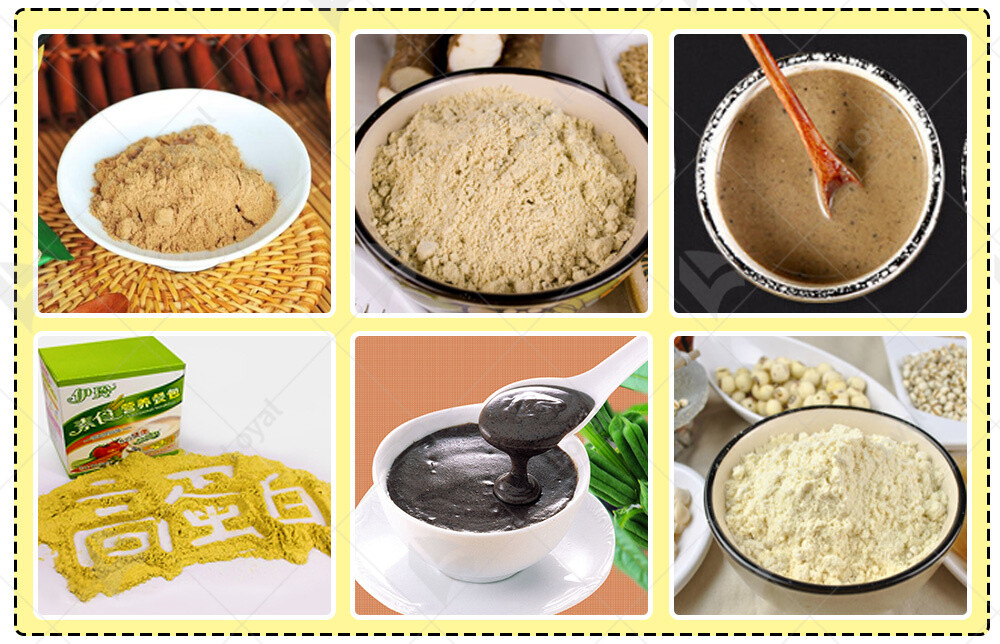
Streamlining Production Processes for Higher Output
In the competitive landscape of food processing, efficiency and output are paramount. A fully automatic nutrition powder process line represents the pinnacle of technological innovation in the industry. By integrating cutting-edge technologies, manufacturers can significantly streamline production processes to achieve higher outputs while optimizing energy usage.
Introduction to Fully Automatic Nutrition Powder Process Lines
Modern food processing demands precision and reliability. A fully automatic nutrition powder process line embodies these principles by automating key production stages. From raw material handling to final packaging, every step is meticulously controlled to ensure consistency and quality.
Key Components of a Fully Automatic Nutrition Powder Process Line
A robust nutrition powder process line comprises several integrated components. These include automated mixing systems, advanced extruders for precise shaping, and sophisticated drying units. Each component plays a crucial role in maintaining product integrity and maximizing production efficiency.
Benefits of Automation in Nutrition Powder Processing
Automation not only enhances production speed but also reduces human error. Automated systems can operate continuously, minimizing downtime and maximizing overall output capacity. This efficiency translates into significant cost savings and improved competitiveness in the market.
Energy Saving Technologies in Nutrition Powder Process Lines
Innovative energy-saving technologies are pivotal in modern food machinery. Nutrition powder process lines incorporate state-of-the-art heat recovery systems, efficient motors, and intelligent power management solutions. These technologies not only reduce operational costs but also contribute to sustainability goals by lowering carbon footprints.
Challenges and Solutions in Implementing Fully Automatic Systems
Despite the advantages, implementing a fully automatic nutrition powder process line presents challenges such as initial capital investment and technical expertise. However, these challenges are mitigated by the long-term benefits of increased productivity and enhanced product consistency.
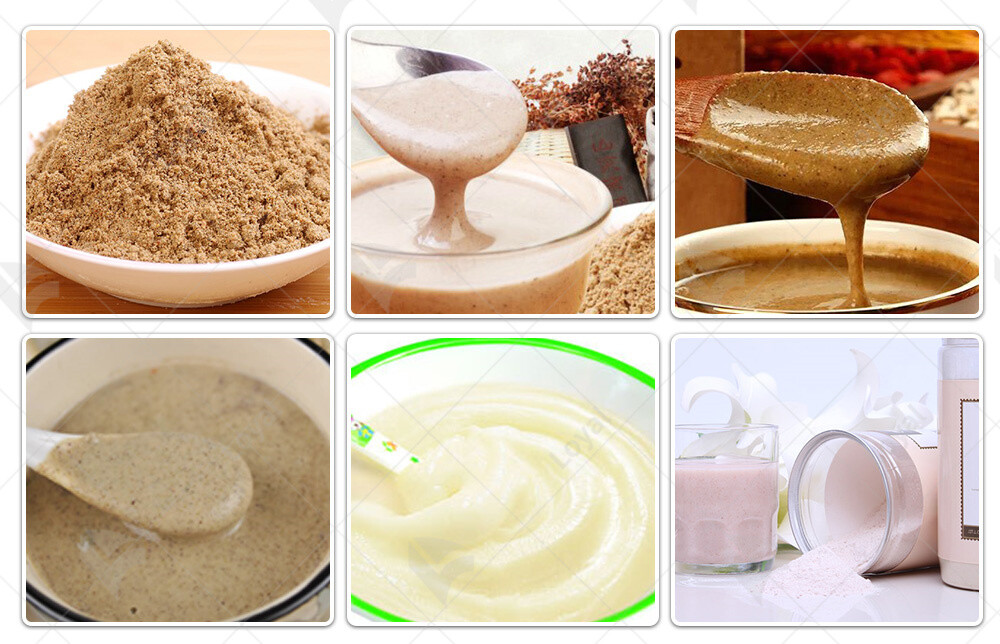
Future Trends and Innovations
The future of fully automatic nutrition powder process lines is poised for groundbreaking advancements in efficiency and sustainability. This section explores upcoming trends and innovations that are shaping the industry landscape.
1.Integration of Artificial Intelligence and Machine Learning
Artificial Intelligence (AI) and Machine Learning (ML) are revolutionizing food processing technologies, including nutrition powder process lines. AI-powered systems analyze vast datasets to optimize production parameters in real-time. Machine learning algorithms predict maintenance needs, reducing downtime and enhancing overall equipment effectiveness (OEE). This integration not only improves operational efficiency but also enhances product consistency and quality assurance.
2.Advancements in Energy-Efficient Technologies
Energy efficiency remains a focal point in the development of nutrition powder process lines. Innovations such as regenerative braking systems and energy recovery units capture and reuse energy during production cycles. Automated shutdown protocols and intelligent power management systems further minimize energy consumption without compromising throughput or product quality. These advancements not only reduce operational costs but also contribute to sustainable manufacturing practices.
3.IoT and Connectivity Solutions
The Internet of Things (IoT) is transforming how manufacturers monitor and manage nutrition powder process lines. IoT-enabled sensors collect real-time data on equipment performance, environmental conditions, and product quality parameters. Cloud-based platforms analyze this data to optimize production schedules, troubleshoot issues remotely, and proactively implement predictive maintenance strategies. Enhanced connectivity ensures seamless integration across the production line, facilitating agile responses to market demands and regulatory requirements.
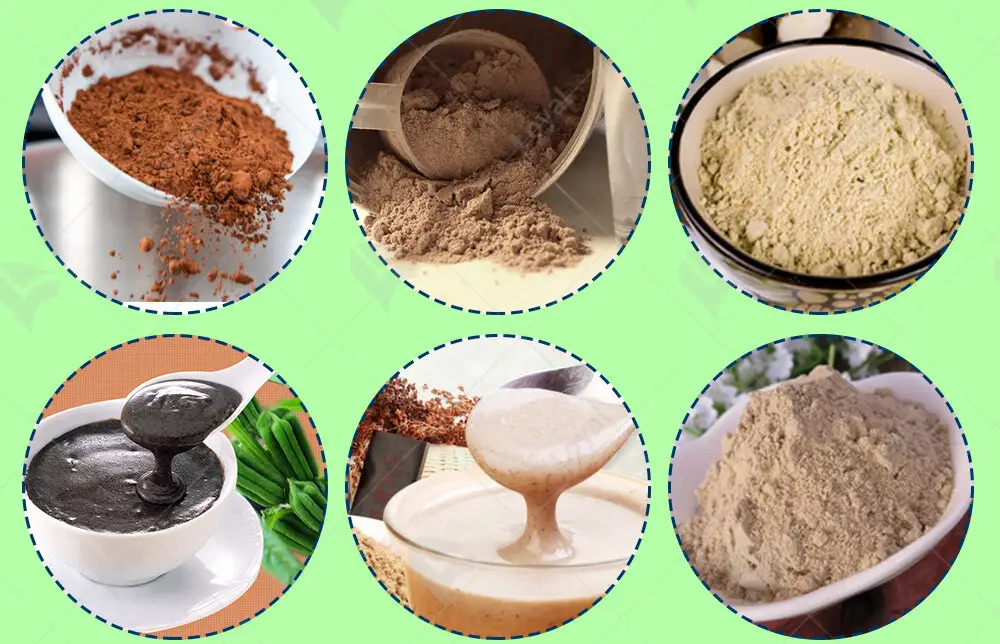
Reference
The following are five authoritative foreign literature websites in the field of Industrial food machinery:
1. Food Engineering Magazine
Website: https://www.foodengineeringmag.com/
2.Food Processing Magazine
Website: https://www.foodprocessing.com/
3.Journal of Food Engineering
Website:https://www.journals.elsevier.com/journal-of-food-engineering
4. Food Manufacturing Magazine
Website:https://www.foodmanufacturing.com/
5. International Journal of Food Science & Technology
Website:https://onlinelibrary.wiley.com/












